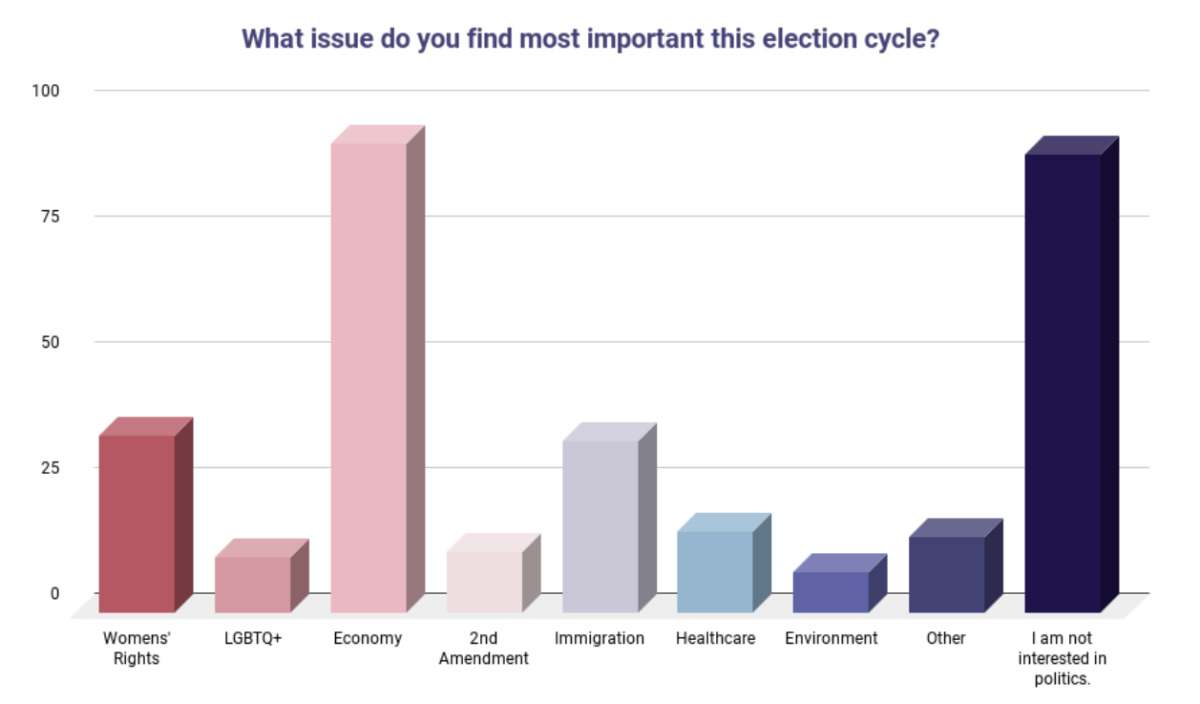Marauder alum Kathryn Richmond, 29, unlocked her phone and opened her LISD email. Richmond’s heart skipped a beat — four more parent emails had flooded into her inbox within ten minutes. That meant four more students to tutor after school. She felt the blood rush to her face as she tried to remember whether she had enough food left in her classroom to feed the students.
“These kids need to eat,” she told herself, rummaging through her cabinet, finally stumbling upon a box of fruit snacks. She counted them. They would last for today — she could make it. She turned to greet her students.
“Hi, sweetheart,” she said, as they filed into her classroom. She smiled, even as she did the math, subtracting her student loan payments, wondering how long she could make it without going to the grocery store.
Richmond has been teaching seventh and eighth grade math at Durham Middle School for over eight years. She graduated from University of North Texas with her bachelor’s, and earned her master’s from Dallas Baptist University. Richmond has $73,000 in student loan debt, and she said that it won’t be paid it off until after she’s retired.
“For the experience, it was an amazing decision to spend all four years at college,” Richmond said. “Financially, it was the most irresponsible thing ever.”
For Richmond, it wasn’t a question of if she would need to take out student loans, but how much. After talking with her parents, she planned to begin paying them off when she graduated and got a teaching job. But, like many college students, she was shocked by the amount of interest that accumulated while she was at school. That interest made paying back the loans extremely difficult.
“Looking back now, it was a terrible decision,” Richmond said. “I get paid on the 20th of each month, and it’s all gone by the 28th.”
After college, Richmond moved home for a year because of the loan debt. She assumed that since it was an installment debt, or a debt to invest into one’s future, it was an okay debt to have. But as Richmond would find out after college, even installment debt isn’t good in large amounts.
“Moving home for that year was really hard,” Richmond said. “I graduated college, I should be on my own, I should be able to do all these things.”
After the year at home, Richmond was able to save and move into an apartment. But it wasn’t cheap.The rising housing market in DFW has caused many people to commute to work from other areas. Richmond said that if she moved home for a few years, she would be able to pay off the majority of her debts, but at 29, she isn’t willing to give up her independence.
“People living at home are people living within their means,” Richmond said. “We’re just trying to survive. It is obscene what I pay for an apartment.”
Every month, $300 is taken out of Richmond’s paycheck, and after rent, very little is left. After years of paying towards this debt, Richmond said that only a couple thousand dollars has been taken off, with most of the money she pays going towards interest.
“It’s frightening, because you don’t truly realize how much it is over time,” Richmond said. “It never seems to go away.”
Richmond dreams of owning a house, and even being able to buy a box of animal crackers for her students without stressing out about how much they cost. Like her parents, Richmond feels pressured to pursue the traditional American Dream, but her loans have made that nearly impossible.
“I’m 29 years old, I should be married with one or two kids and a dalmation at home,” Richmond said. “I live in an apartment, I’m single and have two cats. And it’s not even about the credit, it’s about the debt you’re in.”
Richmond also feels pressure to live the stereotypical life of a modern 20-year-old, but even that has become difficult. ALthough she was heartbroken when her best friend recently moved to Philadelphia, Richmond was relieved that she wouldn’t be going out to dinner so much.
“I can’t afford to go out and pay $20 to get into a club, and another $20 for a drink,” Richmond said. “I’m constantly stressed about money, but I love these kids too much to leave them.”
With her master’s degree, it is possible for Richmond to go into school administration, or another higher-paying job, but she doesn’t have plans to leave the classroom anytime soon. If she had to do it all again, Richmond said she would have worked more during high school and college, and she would have earned her basics at community college for a quarter of the price. She urges college and high school kids to do their research on the cost of college, community college and other options to avoid snowballing debt.
“Unless high school students go out of their way to learn about student loans, they unfortunately won’t be informed about them,” Richmond said.“They don’t realize that it’s an okay debt to have, in moderation.”
Regardless of her debt, Richmond is constantly, like many millenials, caught between the traditional and modern American Dream. Richmond considers her dream to be more modern, but characterizes it by loving what she does. She is often at her school helping students from 6:45 a.m. to 6:00 p.m., and answers student and parent emails all evening. This year, Richard was voted teacher of the year at her school by her students and fellow teachers.
“Do something to better yourself so that you can have a better life regardless of what is considered the norm,” Richmond said. “The dream is what you make of it.”
While the rate of student debt and the price of college continue to climb, Richmond wants to reassure people that despite the economic hardship, it’s still possible to follow your passion and achieve your personal American Dream.
“A lot of it is just being happy with the life that you have,” Richmond said. “I wake up every day excited to go to work.”











